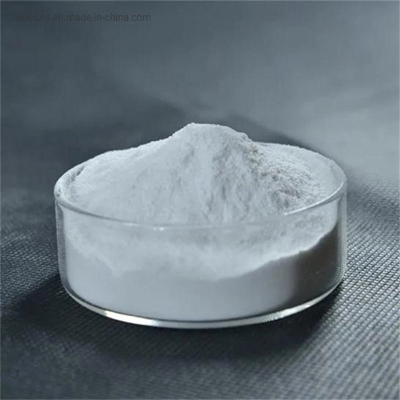Effect and mechanism of Echinacea on Alzheimer's disease model
-
Last Update: 2014-08-29
-
Source: Internet
-
Author: User
Search more information of high quality chemicals, good prices and reliable suppliers, visit
www.echemi.com
Alzheimer's disease (AD) is a kind of dementia disease that often occurs in the elderly Its main pathological features are relatively specific senile plaque formation, neurofibrillary tangle and neuron loss The results show that oxidative stress is closely related to the pathological process of AD H 2O 2 or oxygen free radicals are the products of normal or abnormal metabolic processes such as β - amyloid aggregation, dopamine oxidation and cerebral ischemia-reperfusion The resulting H2O2 can be transformed into highly toxic free radicals that attack proteins, nucleic acids and biomembranes, leading to mitochondrial damage and calcium overload, leading to neuron apoptosis So in recent years, neurodegenerative diseases and apoptosis caused by oxidative stress have been placed in the center of AD research, and the effective substances with antioxidant activity and anti free radical damage will be found from natural products as an important way to develop new anti ad drugs The total glycosides of Cistanche deserticola is a phenylethanolic glycoside extracted from Cistanche tubulosa It is the first traditional Chinese medicine approved by SFDA with phenylethanolic glycosides as the main component, which has a significant relieving effect on the symptoms of vascular dementia The results showed that the total glycosides of Cistanche deserticola had antioxidative and neuroprotective effects Echinacea glycoside is the first phenylethanolic glycoside isolated from Echinacea angustifolia in 1950 It is the main component (content > 25%) and main quality control index of Cistanche deserticola glycoside, and also exists in other plants The results showed that Echinacea could protect liver injury, TNF - α - induced apoptosis of SH-SY5Y cells and 6-hydroxydopamine-induced acute striatal cell injury in rats However, there are few studies on its protective effect on oxidative stress-induced neuronal damage in vitro In this study, we intend to study the protective effect and mechanism of Cistanche glycosides and its main component, Echinacea glycosides, on oxidative stress injury by using the whole animal model and the in vitro cell model from the perspective of oxidative stress The specific contents and results are as follows: 1 Cistanche glycosides can significantly improve the learning and memory of AD mice induced by D-galactose and sodium nitrite, increase the activity of Na ~ + - K ~ + - ATPase, gsh-p_xand SOD in the brain of mice or rats, and reduce the content of No 2 MTT assay showed that Echinacea could significantly improve the survival rate of PC12 cells injured by H 2O 2; flow cytometry and Hoechst The results of 33342 staining showed that Echinacea could significantly reduce the apoptosis and necrosis rate of PC12 cells, improve DNA fragmentation and nuclear pyknosis, and inhibit the apoptosis of PC12 cells, while Echinacea could reduce the LDH leakage of PC12 cells The above results suggest that Echinacea has a significant protective effect on PC12 cells injured by H2O2 3 The activities of Na ~ + - K ~ + - ATPase, gsh-p  ̄ UX and caspase-3 were measured in PC12 cells injured by H  ̄ 2O  ̄ 2 It was found that Echinacea increased the activity of Na ~ + - K ~ + - ATPase and gsh-p x, but decreased the activity of Caspase-3 4 Rhodamine 123 and dcf-da fluorescent dye combined with flow cytometry showed that Echinacea glycoside could significantly increase the mitochondrial membrane potential (MMP) and decrease the level of ROS 5 The results of confocal detection of fluo-3 and DAF showed that [Ca2 +] [UI and no in the cells damaged by H2O2 increased significantly, and the time course curve moved up The increase of [Ca2 +] [UI] and no in injured cells was slowed down and the peak value was decreased The results showed that the decrease of [Ca 2 +] [U I and no was closely related to the inhibition of apoptosis by Echinacea 6 In this study, JC-1 combined with confocal technology was used to further study the changes of MMP in PC12 cells and the intervention of Echinacea glycoside during oxidative damage It was found that the ratio of red fluorescence intensity to green fluorescence intensity (R) of JC-1 in each cell could best reflect the change of MMP 200 μ m h  ̄ 2O  ̄ 2 increased the R  ̄ 0 / R  ̄ t of the cells, while the pretreatment with Echinacea glycoside decreased the R  ̄ 0 / R  ̄ T, indicating that MMP increased 7.Western The results of blotting showed that after oxidative damage, the expression of Bcl-2 in PC12 cells was low, but Bax was high, Bax / Bcl-2 was high The treatment of Echinacea glycoside effectively inhibited the effect of H 2O 2, which made the expression of Bcl-2 protein and Bax protein return to the original level, and Bax / Bcl-2 decreased, which indicated that the inhibition of Bax expression and the enhancement of bcl-2 expression were one of the important mechanisms of Echinacea glycoside inhibiting the apoptosis of PC12 cells 8 RT-PCR semi quantitative analysis showed that the expression of bcl-2 mRNA and p53, p65-2 and iNOS mRNA in PC12 cells decreased significantly under the action of H2O2 Echinacea can antagonize the effect of H 2O u 2, reverse the expression of these genes, and play the role of anti apoptosis The results are as follows: 1 Cistanche glycosides can improve the learning and memory of D-galactose combined with sodium nitrite AD model mice, part of the mechanism is to increase the activity of Na + - K + ATPase, gsh-p_xand SOD in the brain, and reduce the content of No 2 Echinacea can protect PC12 cells from apoptosis and injury induced by H  ̄ 2O  ̄ 2 It can increase the activity of Na ~ + - K ~ + - ATPase, gsh-p  ̄ X and MMP, decrease the level of ROS, Ca ~ (2 +) and no, up regulate the expression of Bcl-2 protein and mRNA, but down regulate the expression of p53, p65 and iNOS MRNA expression and caspase-3 activity decrease are part of the mechanism, which shows that Echinacea can play an anti oxidative stress role in PC12 cells by inhibiting mitochondrial apoptosis pathway 3 On the basis of increasing other pharmacological experiments and clinical studies, Cistanche glycosides can be used in the prevention and treatment of other Alzheimer's disease; this study suggests that Echinacea glycosides may be a more promising candidate compound for the treatment of neurodegenerative diseases such as AD.
This article is an English version of an article which is originally in the Chinese language on echemi.com and is provided for information purposes only.
This website makes no representation or warranty of any kind, either expressed or implied, as to the accuracy, completeness ownership or reliability of
the article or any translations thereof. If you have any concerns or complaints relating to the article, please send an email, providing a detailed
description of the concern or complaint, to
service@echemi.com. A staff member will contact you within 5 working days. Once verified, infringing content
will be removed immediately.







